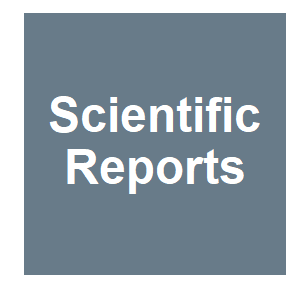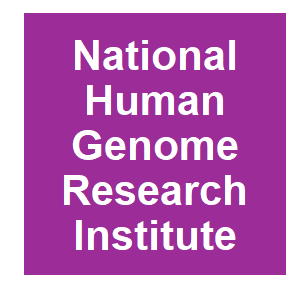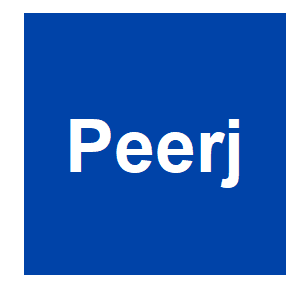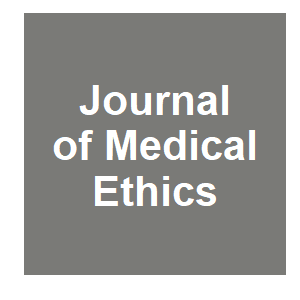
Keywords: Genetic engineering

|
CRISPR-mediated germline mutagenesis for genetic sterilization of Anopheles gambiae malesSmidler, A.L., Marrogi, E., Kauffman, J. et al., Scientific Reports, 14. 2024.
Rapid spread of insecticide resistance among anopheline mosquitoes threatens malaria elimination efforts, necessitating development of alternative vector control technologies. Sterile insect technique (SIT) has been successfully implemented in multiple insect pests to suppress ... Keywords: bioethics, deliberation, democratic deliberation, engagement, Gene drive, Genetic engineering, Indigenous peoples |

|
Gene drive and genetic sex conversion in the global agricultural pest Ceratitis capitataMeccariello, A., Hou, S., Davydova, S. et al., Nature Communications, 15:372. 2024.
Homing-based gene drives are recently proposed interventions promising the area-wide, species-specific genetic control of harmful insect populations. Here we characterise a first set of gene drives in a tephritid agricultural pest species, the Mediterranean fruit fly Ceratitis ... Keywords: bioethics, deliberation, democratic deliberation, engagement, Gene drive, Genetic engineering, Indigenous peoples |

|
Viruses that ‘infect’ viruses: Cas12f1 and Cas9 gene drive in HSV1Hongsheng Dai, Qiaorui Yao, Zhuangjie Lin, Keyuan Lai, Xianyin Zeng, Guangxiong Lei, Tongwen Zhang, bioRxiv, 2023.
Cas9-based synthetic gene drives constitute some minimal elements capable of editing DNA with sequence specificity. However, they face high resistance rate and mitigation strategies developed so far are difficult to implement. Here, we engineered herpes simplex virus type 1 ... Keywords: bioethics, deliberation, democratic deliberation, engagement, Gene drive, Genetic engineering, Indigenous peoples |

|
Homing-based gene drives can introgress rapidly into local genetic backgrounds with minimal chromosomal conversion in Anopheles gambiaeTony Nolan, Poppy Pescod, Giulia Bevivino et al., Research Square, 2023.
CRISPR-Cas9 gene drive control strategies use a homing selfish genetic element which induces a double-stranded break at the target site and is copied into the opposing chromosome, breaking an essential gene and ensuring super-Mendelian inheritance. During the copying process SNPs ... Keywords: bioethics, deliberation, democratic deliberation, engagement, Gene drive, Genetic engineering, Indigenous peoples |

|
Repeat mediated excision of gene drive elements for restoring wild-type populationsPratima R Chennuri, Josef Zapletal, Raquel D Monfardini, Martial Loth Ndeffo-Mbah, Zach N Adelman, Kevin M Myles, bioRxiv, 2023.
We demonstrate here that single strand annealing (SSA) repair can be co-opted for the precise autocatalytic excision of a drive element. Although SSA is not the predominant form of DNA repair in eukaryotic organisms, we increased the likelihood of its use by engineering direct ... Keywords: bioethics, deliberation, democratic deliberation, engagement, Gene drive, Genetic engineering, Indigenous peoples |

|
Engineering mice for female-biased progeny without impacting genetic integrity and litter sizeIdo Yosef, Tridib Mahata, Yuhuang Chen, Hadas Bar-Joseph, Ruth Shalgi, Ariel Munitz, Motti Gerlic, Udi Qimron, bioRxiv, 2023.
Generating mammalian gametes with a skewed sex ratio has thus far eluded empirical confirmation. The utilization of such genetically engineered organisms would offer the potential to curtail the necessity for culling animals of undesirable sex, mitigate resource wastage, and ... Keywords: bioethics, deliberation, democratic deliberation, engagement, Gene drive, Genetic engineering, Indigenous peoples |

|
Synthetic gene drives as an anthropogenic evolutionary forceA. D. Cutter, Trends in Genetics, 2023.
Genetic drive represents a fundamental evolutionary force that can exact profound change to the genetic composition of populations by biasing allele transmission. Herein I propose that the use of synthetic homing gene drives, the human-mediated analog of endogenous genetic ... Keywords: bioethics, deliberation, democratic deliberation, engagement, Gene drive, Genetic engineering, Indigenous peoples |

|
Gene Drive: Past, Present and Future Roads to Vertebrate BiocontrolG. R. McFarlane, C. B. A. Whitelaw and S. G. Lillico, Applied Biosciences, 2:52-70. 2023.
Scientists have long sought a technology to humanely control populations of damaging invasive pests in a species-specific manner. Gene drive technology could see this become a reality. This review charts the twists and turns on the road to developing gene drives in vertebrates. ... Keywords: bioethics, deliberation, democratic deliberation, engagement, Gene drive, Genetic engineering, Indigenous peoples |

|
GMOs in Africa: Status, adoption and public acceptanceL. A. Gbadegesin, E. A. Ayeni, C. K. Tettey, V. A. Uyanga, O. O. Aluko, J. K. Ahiakpa, C. O. Okoye, J. I. Mbadianya, M. A. Adekoya, R. O. Aminu, F. P. Oyawole and P. Odufuwa, Food Control, 141:109193. 2022.
Globally, genetically modified (GM) crops contribute to food security by increasing crop yield, quality and shelf-life. The commercialisation and adoption of GM crops in many developed countries raised hope of improving food security and livelihood. Africa, a developing continent ... Keywords: bioethics, deliberation, democratic deliberation, engagement, Gene drive, Genetic engineering, Indigenous peoples |

|
Empowering Indigenous Knowledge in Deliberations on Gene Editing in the WildR. Taitingfong and A. Ullah, Hastings Center Report, 51 Suppl 2:S74-s84. 2021.
Proposals to release genetically engineered organisms in the wild raise complex ethical issues related to their safe and equitable implementation. While there is broad agreement that community and public engagement is vital to decision-making in this context, more discussion is ... Keywords: bioethics, deliberation, democratic deliberation, engagement, Gene drive, Genetic engineering, Indigenous peoples |

|
Interdisciplinary development of a standardized introduction to gene drives for lay audiencesC. E. Schairer, C. Triplett, A. Buchman, O. S. Akbari and C. S. Bloss, BMC Medical Research Methodology, 20:15. 2020.
While there is wide consensus that the public should be consulted about emerging technology early in development, it is difficult to elicit public opinion about innovations unfamiliar to lay audiences. We sought public input on a program of research on genetic engineering to ... Keywords: bioethics, deliberation, democratic deliberation, engagement, Gene drive, Genetic engineering, Indigenous peoples |

|
Design and analysis of CRISPR-based underdominance toxin-antidote gene drivesJ. Champer, S. E. Champer, I. K. Kim, A. G. Clark and P. W. Messer, Evolutionary Applications, 18. 2020.
We model drives which target essential genes that are either haplosufficient or haplolethal, using nuclease promoters with expression restricted to the germline, promoters that additionally result in cleavage activity in the early embryo from maternal deposition, and promoters ... Keywords: bioethics, deliberation, democratic deliberation, engagement, Gene drive, Genetic engineering, Indigenous peoples |

|
Suppressing evolution in genetically engineered systems through repeated supplementationN. C. Layman, B. M. Tuschhoff, A. J. Basinski, C. H. Remien, J. J. Bull and S. L. Nuismer, Evolutionary Applications, 12. 2020.
Genetically engineered organisms are prone to evolve in response to the engineering. This evolution is often undesirable and can negatively affect the purpose of the engineering. Methods that maintain the stability of engineered genomes are therefore critical to the successful ... Keywords: bioethics, deliberation, democratic deliberation, engagement, Gene drive, Genetic engineering, Indigenous peoples |

|
Translating gene drive science to promote linguistic diversity in community and stakeholder engagementC. Cheung, S. Gamez, R. Carballar-Lejarazú, V. Ferman, V. N. Vásquez, G. Terradas, J. Ishikawa, C. E. Schairer, E. Bier, J. M. Marshall, A. A. James, O. S. Akbari and C. S. Bloss, Global Public Health, 2020.
Information about genetic engineering (GE) for vector control in the United States is disseminated primarily in English, though non-English speakers are equally, and in some geographic regions even more affected by such technologies. Non-English-speaking publics should have equal ... Keywords: bioethics, deliberation, democratic deliberation, engagement, Gene drive, Genetic engineering, Indigenous peoples |

|
Can CRISPR gene drive work in pest and beneficial haplodiploid species?J. Li, O. Aidlin Harari, A.-L. Doss, L. L. Walling, P. W. Atkinson, S. Morin and B. E. Tabashnik, Evolutionary Applications, 2020.
Gene drives based on CRISPR/Cas9 have the potential to reduce the enormous harm inflicted by crop pests and insect vectors of human disease, as well as to bolster valued species. In contrast with extensive empirical and theoretical studies in diploid organisms, little is known ... Keywords: bioethics, deliberation, democratic deliberation, engagement, Gene drive, Genetic engineering, Indigenous peoples |

|
Should the humans be allowed to genetically modify insects?Olivia Abbe, NYK Daily, 2020.
Genetic engineering, also called Genetic modification or Genetic manipulation, is the direct manipulation of an organism’s genes using biotechnology. It is a set of technologies used to change the genetic makeup of cells, including the transfer of genes within and across ... Keywords: bioethics, deliberation, democratic deliberation, engagement, Gene drive, Genetic engineering, Indigenous peoples |

|
Population-level multiplexing: A promising strategy to manage the evolution of resistance against gene drives targeting a neutral locusM. P. Edgington, T. Harvey-Samuel and L. Alphey, Evolutionary Applications, 10. 2020.
CRISPR-based gene drives bias inheritance in their favour by inducing double-stranded breaks (DSBs) at wild-type homologous loci and using the drive transgene as a repair template-converting drive heterozygotes into homozygotes. Recent studies have shown that alternate ... Keywords: bioethics, deliberation, democratic deliberation, engagement, Gene drive, Genetic engineering, Indigenous peoples |

|
What is genome editing?NHGRI, NHGRI, 2019.
Genome editing is a method that lets scientists change the DNA of many organisms, including plants, bacteria, and animals. Editing DNA can lead to changes in physical traits, like eye color, and disease risk. Scientists use different technologies to do this. Keywords: bioethics, deliberation, democratic deliberation, engagement, Gene drive, Genetic engineering, Indigenous peoples |

|
Spatial structure undermines parasite suppression by gene drive cargoBull, JJR, Christopher H.; Gomulkiewicz, Richard; Krone, Stephen M., PeerJ, 7:e7921. 2019.
Gene drives may be used in two ways to curtail vectored diseases. Both involve engineering the drive to spread in the vector population. One approach uses the drive to directly depress vector numbers, possibly to extinction. The other approach leaves intact the vector population ... Keywords: bioethics, deliberation, democratic deliberation, engagement, Gene drive, Genetic engineering, Indigenous peoples |

|
Genetic frontiers for conservation: An assessment of synthetic biology and biodiversity conservationK. H. Redford, T. Brooks, M., B. W. Nicholas and J. S. A. Macfarlane, International Union for Conservation of Nature, 2019.
This assessment is the beginning of a process that will lead to the development of an IUCN policy to guide the Union’s Director General, Commissions, and Members. The draft policy will be discussed in many fora before it is brought to vote at the World Conservation Congress in ... Keywords: bioethics, deliberation, democratic deliberation, engagement, Gene drive, Genetic engineering, Indigenous peoples |

|
THE NATIONAL BIOSAFETY TECHNICAL COMMISSION (CTNBio) NORMATIVE RESOLUTION No. 16, OF JANUARY 15, 2018CTNBio, National Biosafety Technical Commission of Brasil, 2018.
Sets forth the technical requirements for submitting an inquiry to the CTNBio concerning Precision Breeding Innovation Techniques. THE NATIONAL BIOSAFETY TECHNICAL COMMISSION (CTNBio), using its legal and regulatory powers and in observance of sections XV and XVI of article 14 of ... Keywords: bioethics, deliberation, democratic deliberation, engagement, Gene drive, Genetic engineering, Indigenous peoples |

|
Driven to extinction? The ethics of eradicating mosquitoes with gene-drive technologiesPugh, J, Journal of Medical Ethics, 42:578-581. 2016.
Mosquito-borne diseases represent a significant global disease burden, and recent outbreaks of such diseases have led to calls to reduce mosquito populations. Furthermore, advances in gene-drive' technology have raised the prospect of eradicating certain species of mosquito via ... Keywords: bioethics, deliberation, democratic deliberation, engagement, Gene drive, Genetic engineering, Indigenous peoples |

Contact
David O’Brochta
Foundation for the
National Institutes of Health
geneconvenevi@fnih.org
RSS

